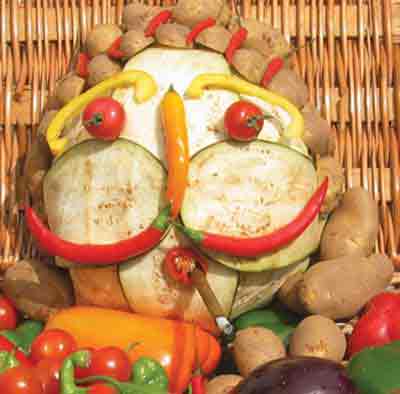|
|
Introducing Colonel Nightshade |
|
Craig Sams founder of Whole Earth Foods and Chair of the Soil Association first got intersted in the Solanacae, or deadly nightshade family of foods 20 years ago when he developed a prototype of his Nomato tomato free foods. Here he looks in some detail at these recent invaders of European cuisine to which an increasing number of people are developing allergies and intolerances |
In the diet of Europe and Asia only one nightshade food was eaten until recent times: the aubergine or eggplant. Other nightshades such as henblane, thorn apple (datura stramonium), belladonna and mandrake were well known but their use was restricted to specific medical applications (sedative, anesthetic or poison) or in witchcraft. Then, in the 1600s and 1700s food and drug crops based on nightshades were imported from the Americas and for the past 400 years have penetrated and become ubiquitous in the Western diet. These include tobacco, tomatoes, potatoes and chili peppers. It is not surprising that these novel foods, being nightshades, were regarded with suspicion at first and were slow to take hold in the European diet. They all contain nicotine in some form, although it may be named solanine (potatoes), tomatine (tomatoes), alpha-solanine (aubergine) or solanadine (chillies and capsicums). It is now apparent that there are groups of people who cannot tolerate nightshades in their diets or find that eliminating them helps alleviate a variety of mental, emotional and physical problems. The following groups of people avoid nightshades. Arthritis Eczema Gastro Esophogal Reflux Disease Cystitus, Lupus, Psoriasis Blood Group Diet Those quitting smoking Tobacco Although the atropine (nicotine) content of tobacco is much higher than that found in the nightshade vegetables which are eaten, smoking rather than eating the leaf reduces the amount of nicotine absorbed. The nicotine in a single cigarette, if taken direct into the bloodstream, would be fatal. Eating a single cigarette could cause severe illness. There are several instances of livestock poisoning where cattle or sheep have eaten nightshade plant leaves. Tomatoes The botanical name for tomatoes 'Lycopersicon' means 'wolf peach' and refers to the association between werewolves, witchcraft and nightshades. Then, in 1820, Colonel Robert Johnson defied the advice of his physicians ('You will foam and froth at the mouth and double over') and ate tomatoes on the steps of Salem Courthouse, New Jersey, in front of a crowd of 2000 witnesses, the local sheriff waiting to arrest him for suicide. He survived and people began slowly to accept tomatoes as food. In the US and Northern Europe they really took off as food with the introduction of canning and canned soups and then rose again with the expansion of consumption of pizza and pasta in the past 30 years. Potatoes Traditionally potatoes were kept in paper sacks and sold unwashed. This practice protected them from direct sunlight. The modern practice of washing potatoes and packing them in plastic bags allows light to affect the potato and stimulate its production of solanine, the nightshade alkaloid that, in nature, sickens animals that might dig up potatoes for food. In 1976 the Department of Health, concerned about high levels of anencephaly and spina bifida, urged pregnant mothers to wear rubber gloves when preparing potatoes and to discard in their entirety any potatoes that showed signs of greening or of blight (black streaks in the potato). It is not enough to simply remove the discoloured part - none of that potato should be eaten. The solanine in potatoes is 4 times greater in the skin than in the rest of the potato. A fatal dose of solanine for an adult is 200-250 mg depending on body weight. Potatoes should not contain more than 20 mg of solanine per 100g, so it would take at least 1 Kg of potatoes (2.2 lbs) to be fatal. Potato peels have been found to contain up to 180 mg of solanine per 100g, so a person consuming 150-200g of deep fried potato peels with a high solanine content could be at considerable risk. Potatoes that have been properly stored and are from low solanine varieties will only contain 7mg/100g. In 1996 the Committee on Toxicity stated that potatoes should not be eaten if they still taste bitter after the green parts and sprouts have been removed. However, few people taste-test a raw potato once it is peeled to assess its bitterness. Although spina bifida prevention now focuses on preconceptual consumption of folic acid, the world's highest incidence of spina bifida is in Ireland, where the wet climate encourages late potato blight. A study in Belfast showed that mothers who had given birth to a child with spina bifida or anencephaly could reduce the risk of a similar defect in the second child by 50% if they maintained a potato-free diet. First published in 2004 See here for more articles on nightshades
|













